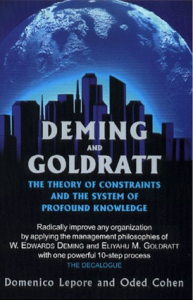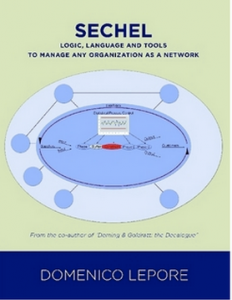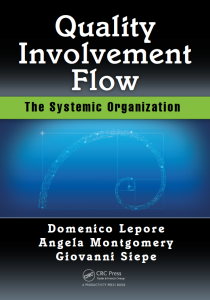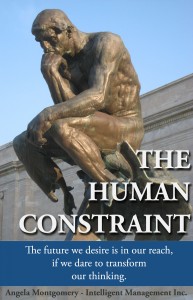1. Establishing the goal of the system, the units of measurement and the operation measurements
2. Seeing the system
3. Making the system stable
4. Identifying the constraint and carry out the Five Focusing Steps
5. Implementing buffer management
6. Reducing the variability of the constraint and the main processes
7. Creating a suitable management structure
8. Eliminating the external constraint: selling the excess capacity
9. Bringing the constraint inside the organization when possible
10. Setting up a continuous learning program
About the Ten Steps
- Organizations are Systems, i.e. network of interdependent processes all aimed at a common goal. Accordingly, ANY organization wanting to sustain its growth has to structure itself in a way that facilitates the management of these interdependent processes. With “management” we mean the ability to anticipate what is going to happen as a result of any taken action.
- The first three steps of “The Decalogue” deal precisely with this issue: define a measurement system capable of measuring outcome of taken actions; build the processes making up the system and visualize their “input-output” interdependences; understand the intrinsic statistical fluctuations these processes are affected by. This last step is carried out with the help of Statistical Process Control (a body of mathematical knowledge developed last century) and the Theory of Management that it originated; it is called “Quality Management”.
- Managing a network of interdependencies towards a common goal can be greatly facilitated if we choose a physical constraint, i.e. an element of the system that we elect as “leverage point” for the whole organization; normally, in a manufacturing facility such a point is a well designated machine or process phase.
- From an economic, i.e. cash generation, standpoint this constraint will dictate the pace at which the whole organizational system will produce results. In other words, managing the constraint is more or less equivalent to managing the whole system. How do we do that? By making the constraint work all the time, on the right economic mix (optimal cash generation) and by subordinating (i.e. sub-optimizing) every activity of the system to the optimal functioning of the constraint. One minute lost on the constraint is cash that the system will never get back. In order to prevent disruptions on the constraint AND at the same time have a firm grasp of how the rest of the system is performing, we need to institute a protection and control mechanism on the constraint, something that prevents the cumulated variability of the processes (breakdowns, snags, rework, strikes, etc.) to harm the constraint. We call this protection “Buffer” (a quantity of time we allow to exist in front of the chosen constraint – how much time in advance the batch to be processed by the constraint has to get there) and “Buffer Management” the Plan-Do-Study-Act cycle we trigger by measuring the statistical fluctuations that affect the Buffer. These are Steps four, five and six (see also step nine) of The Decalogue.
- Depending on the kind of typology of production and market needs there are different “finite capacity” algorithms (constraint based) that can be used; they all have in common the idea of control and the maximization of the performances of the constraint via its statistical understanding.
- For all these activities to take place successfully (and be integrated with a successful marketing and sales process, notoriously infamous for being enacted by people unwilling to act systemically, Step eight of The Decalogue) the organization has to be designed appropriately, i.e. like a real system – step seven of The Decalogue. Such a design can be enabled effectively if we choose a control mechanism that is not artificially imposed, i.e. like the conventional ones driven by a hierarchical view of the organization.
- Conventional hierarchies are silos that, by design, are hindered in the way they can cooperate; typically their performances are measured locally, i.e. at functional level, and different company functions have different performance metrics, often conflictual.
- A way to design an organization which is genuinely systemic, i.e. one where we can really manage the dynamic network of interdependencies, the “real life” community of practices that is foundational to the functioning and the growth of any organization, we must embed, not superimpose, a control mechanism in the way the network evolves.
- A practical way of doing it is to design the organization as a “network of projects” (this is a further specification of step seven of The Decalogue). In essence, we can start looking at the life of any organization in terms of repetitive activities and new initiatives; the former are managed as processes (input-output, key performance indicators, statistical fluctuations), the latter as projects, to be managed according to finite capacity scheduling (no multitasking and milestones, resource contention resolution, stacking, project and feeding buffers). The algorithm for this scheduling is called “Critical Chain”.
- An organization designed as a network of projects, while ensuring sustainable growth and optimal use of resources, it does require a considerable learning effort from the people that work in it and, even more so, by the leaders that work ON it. It does require a shift in mindset and has to have continuous learning at the core of it – step ten of The Decalogue.
The ten steps of The Decalogue represent a transformative pattern that can be adopted by any organization and they emerge very clearly from an in-depth analysis of what makes an organization fail in its effort to manage sustainable growth. Such analysis is well elucidated in both of our books and it was conducted with the aid of the Thinking Processes Tools from the Theory Of Constraints.
The Thinking Process Tools are the standard way with which The Decalogue has been implemented in a myriad of organizations and offer an exceptionally strong support in decision making as well as in developing the managerial skills needed to accomplish the transformation of the prevailing style of management into one of system optimization.








